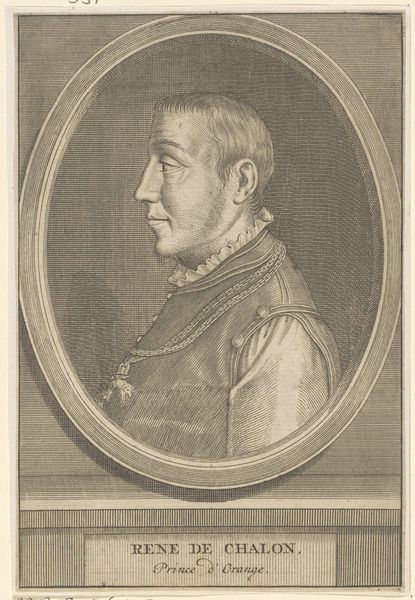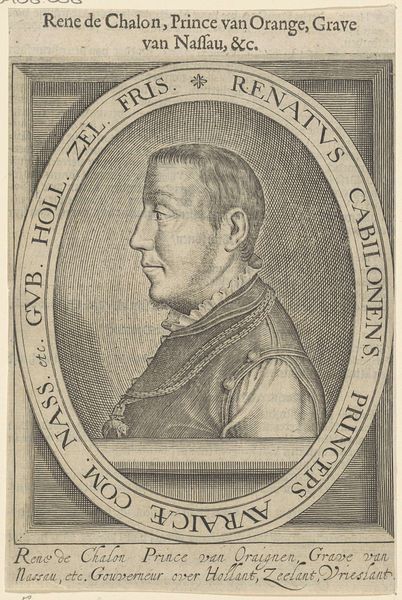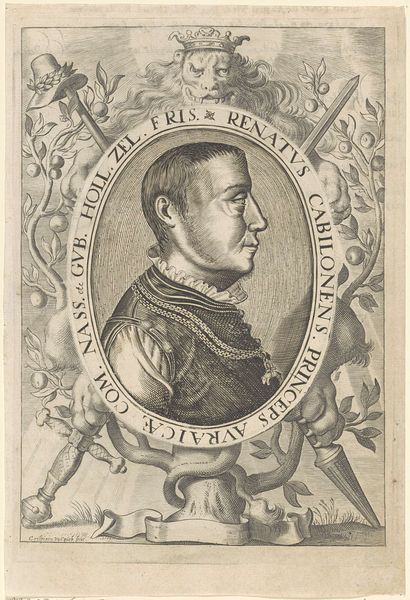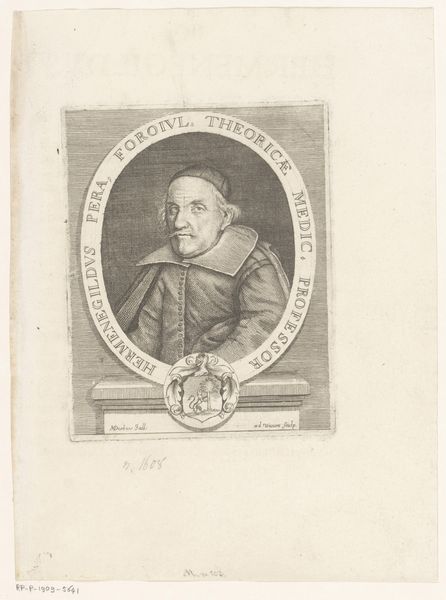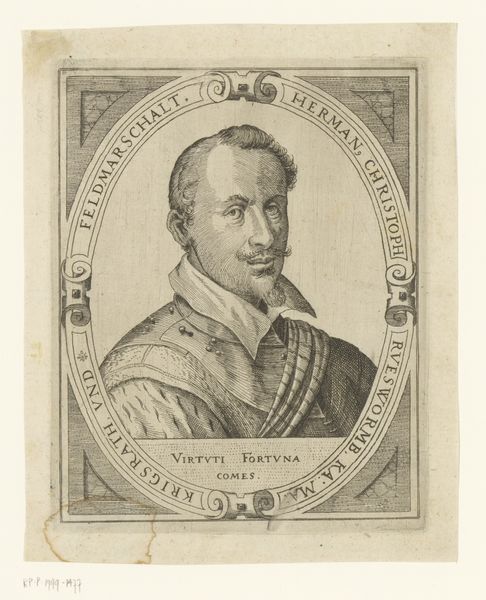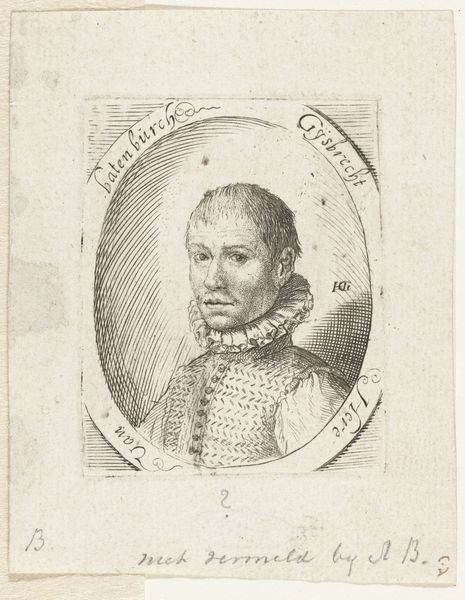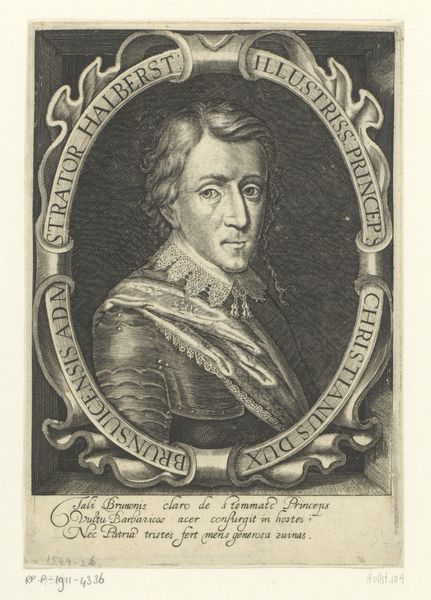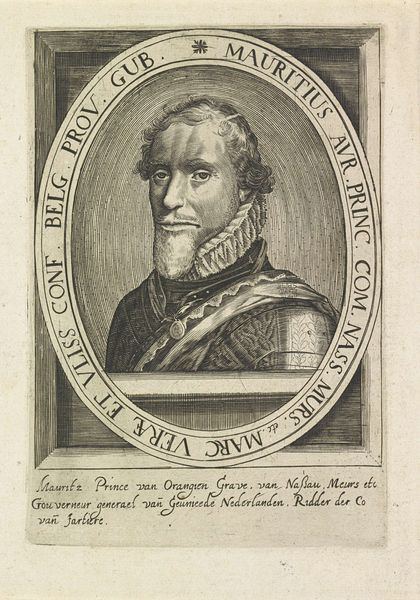
engraving
#
baroque
#
old engraving style
#
figuration
#
line
#
history-painting
#
engraving
Dimensions: height 190 mm, width 133 mm
Copyright: Rijks Museum: Open Domain
This undated print portrays René of Châlon, Prince of Orange, and was made by an anonymous artist. Its visual language is rooted in the conventions of Renaissance portraiture, but it exists within a specific framework of political and social power. Note the Latin inscription, ‘Renatus Cabilionens Princeps Auraice,’ framing the image. René was a significant figure in the Low Countries, governing Holland, Zeeland, and Friesland. The inscription highlights his princely status and territorial reach, typical of the early modern obsession with titles and dominion. The format – the engraved portrait – served as a crucial tool for disseminating images of power. To truly understand this image, we can look at the history of the House of Orange-Nassau and the political landscape of the 16th century Netherlands. Research into archival records, genealogical studies, and period publications could reveal the context in which this print circulated and how it contributed to the construction of René’s public image. Art, in this sense, is a product of historical and institutional forces.
Comments
No comments
Be the first to comment and join the conversation on the ultimate creative platform.
